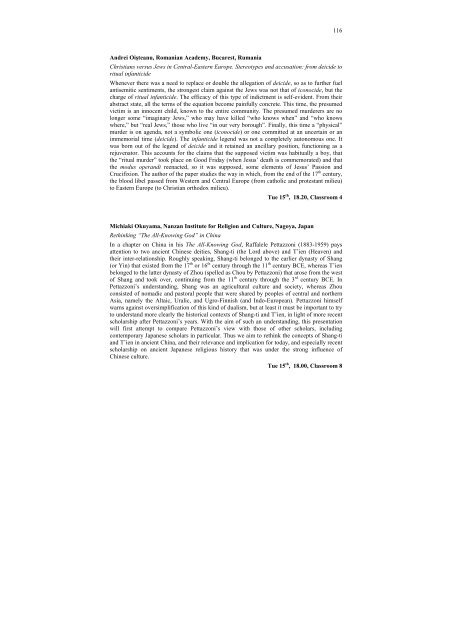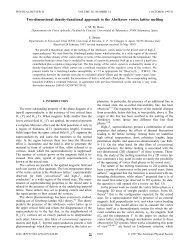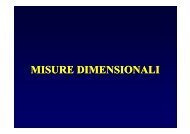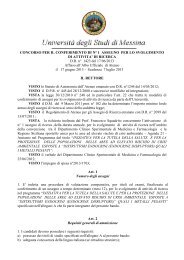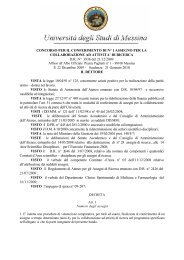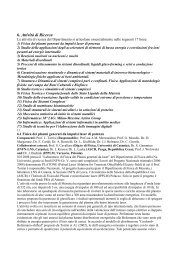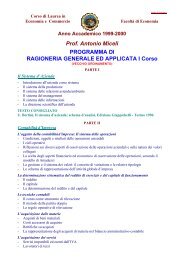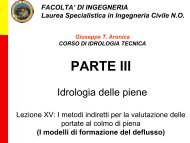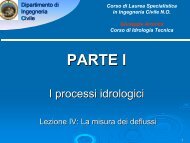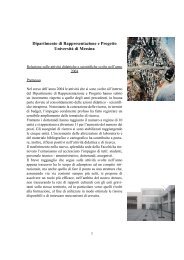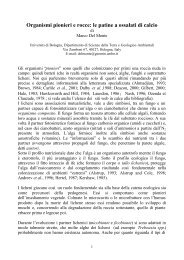PROGRAMME AND ABSTRACTS - Università degli Studi di Messina
PROGRAMME AND ABSTRACTS - Università degli Studi di Messina
PROGRAMME AND ABSTRACTS - Università degli Studi di Messina
You also want an ePaper? Increase the reach of your titles
YUMPU automatically turns print PDFs into web optimized ePapers that Google loves.
Andrei Oişteanu, Romanian Academy, Bucarest, Rumania<br />
Christians versus Jews in Central-Eastern Europe. Stereotypes and accusation: from deicide to<br />
ritual infanticide<br />
116<br />
Whenever there was a need to replace or double the allegation of deicide, so as to further fuel<br />
antisemitic sentiments, the strongest claim against the Jews was not that of iconocide, but the<br />
charge of ritual infanticide. The efficacy of this type of in<strong>di</strong>ctment is self-evident. From their<br />
abstract state, all the terms of the equation become painfully concrete. This time, the presumed<br />
victim is an innocent child, known to the entire community. The presumed murderers are no<br />
longer some “imaginary Jews,” who may have killed “who knows when” and “who knows<br />
where,” but “real Jews,” those who live “in our very borough”. Finally, this time a “physical”<br />
murder is on agenda, not a symbolic one (iconocide) or one committed at an uncertain or an<br />
immemorial time (deicide). The infanticide legend was not a completely autonomous one. It<br />
was born out of the legend of deicide and it retained an ancillary position, functioning as a<br />
rejuvenator. This accounts for the claims that the supposed victim was habitually a boy, that<br />
the “ritual murder” took place on Good Friday (when Jesus’ death is commemorated) and that<br />
the modus operan<strong>di</strong> reenacted, so it was supposed, some elements of Jesus’ Passion and<br />
Crucifixion. The author of the paper stu<strong>di</strong>es the way in which, from the end of the 17 th century,<br />
the blood libel passed from Western and Central Europe (from catholic and protestant milieu)<br />
to Eastern Europe (to Christian orthodox milieu).<br />
Tue 15 th , 18.20, Classroom 4<br />
Michiaki Okuyama, Nanzan Institute for Religion and Culture, Nagoya, Japan<br />
Rethinking “The All-Knowing God” in China<br />
In a chapter on China in his The All-Knowing God, Raffalele Pettazzoni (1883-1959) pays<br />
attention to two ancient Chinese deities, Shang-ti (the Lord above) and T’ien (Heaven) and<br />
their inter-relationship. Roughly speaking, Shang-ti belonged to the earlier dynasty of Shang<br />
(or Yin) that existed from the 17 th or 16 th century through the 11 th century BCE, whereas T’ien<br />
belonged to the latter dynasty of Zhou (spelled as Chou by Pettazzoni) that arose from the west<br />
of Shang and took over, continuing from the 11 th century through the 3 rd century BCE. In<br />
Pettazzoni’s understan<strong>di</strong>ng, Shang was an agricultural culture and society, whereas Zhou<br />
consisted of noma<strong>di</strong>c and pastoral people that were shared by peoples of central and northern<br />
Asia, namely the Altaic, Uralic, and Ugro-Finnish (and Indo-European). Pettazzoni himself<br />
warns against oversimplification of this kind of dualism, but at least it must be important to try<br />
to understand more clearly the historical contexts of Shang-ti and T’ien, in light of more recent<br />
scholarship after Pettazzoni’s years. With the aim of such an understan<strong>di</strong>ng, this presentation<br />
will first attempt to compare Pettazzoni’s view with those of other scholars, inclu<strong>di</strong>ng<br />
contemporary Japanese scholars in particular. Thus we aim to rethink the concepts of Shang-ti<br />
and T’ien in ancient China, and their relevance and implication for today, and especially recent<br />
scholarship on ancient Japanese religious history that was under the strong influence of<br />
Chinese culture.<br />
Tue 15 th , 18.00, Classroom 8


